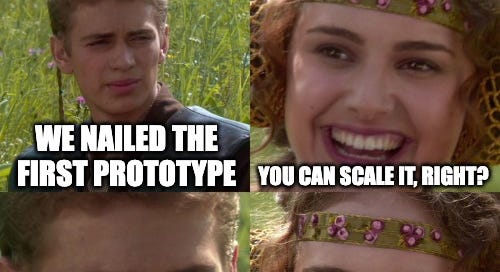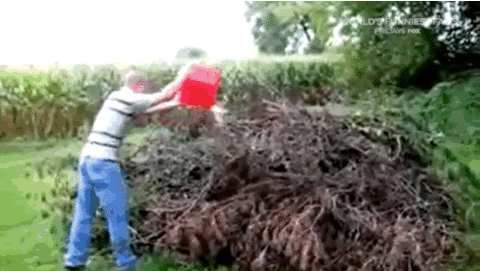Read time: 4 min
Want to watch our insight-packed FOAK conversation with Yair Reem (General Partner at Extantia)?
Trust me, it’s worth your time 🌟
Why the First Prototype is Just the Beginning
The prototype is the easy part. The real challenge?
Scaling.
When you start scaling, you don’t just scale the good stuff—you scale the bad stuff too.
Those tiny cracks and losses in the lab?
Multiply them by a thousand, and suddenly your once-promising tech is no longer commercially viable.
The Evolution of VC: From Hardware to Software and Back Again
Before the ’90s, VCs were all about hardware.
Then the software game took off with the internet, and it was all about coding.
Now, as we see with companies like Nvidia, pulling more power into hardware can open up a gigantic market.
This is what VC is all about: finding those golden opportunities where innovation meets massive market potential.
The FOAK Phenomenon
So, what is FOAK?
It’s a term we’ve been playing with for a while.
It started catching on around 2018-2019 when the second wave of climate tech companies began maturing.
First of a Kind means exactly what it sounds like.
It’s the first time something is done in a certain setup. Either a new technology, a new business model, or a combination of technologies being brought together for the first time.
But there’s more.
It has to be part of a series—something that can be repeated.
Otherwise, it’s just a pilot or a prototype.
FOAK must demonstrate that all elements of the process are scalable, proving that the next step can be taken.
The Real Complexity of Scaling
Once you move past the prototype, you’re in the realm of real complexity.
For example, if you’re using bioreactors, scaling up isn’t just about going from 5 liters in the lab to 50 liters in production. You need to ensure every part of the process is scalable without introducing fatal flaws.
Banks and private equity firms love funding the second or third iteration because it’s proven.
But the first time?
That’s where VCs need to step in. It’s a window of real opportunity.
Success Stories
Taking the FOAK risk can lead to exponential growth.
Look at H2 Green Steel.
They combined existing tech with the novel use of green hydrogen to reduce iron ore. This had never been done before and has significantly boosted their valuation.
Other sectors like sustainable aviation fuel are ripe with FOAK opportunities.
The Hardware Comeback
Remember, before software, there was hardware.
Silicon Valley is named after silicon, not software.
There are immense VC returns to be made in hardware, specifically in climate tech. Nvidia’s success proves that hardware innovation can lead to massive market opportunities.
The Role of Investors
Strategic investors are crucial in scaling FOAK projects.
That said VCs shouldn’t substitute for debt financing.
The role of VCs is to invest early, to de-risk projects, and to lay the ground for dedicated FOAK financing, which is still emerging but will become an enormous asset class in the years to come.
For any hardware startup in climate tech, offtake agreements are essential. They are the ARR (Annual Recurring Revenue) of hardware companies. And they are the condition to attract debt financing to finance FOAK projects.
Conclusion
The first prototype is just the beginning.
Scaling is where the real work—and opportunity—begins.
VCs must jump on that opportunity and handle early equity financing before startups can raise specialized financing vehicles (grants, venture debt, infrastructure funds...) to unlock massive scale and leapfrog the climate tech space.
Whenever you're ready, come join our Climate angel community:
👉 Invest in Climate Moonshots 🚀 Join 320+ members and become a shareholder of the best Climate Tech startups alongside us, from $1,000, join us here.







